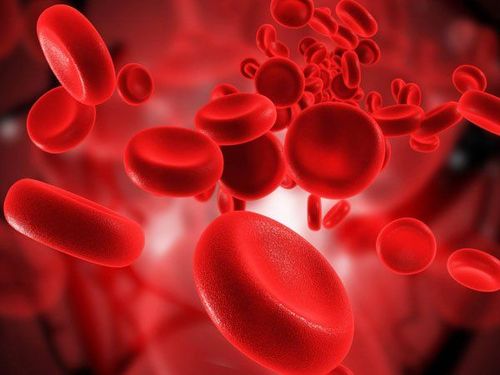This is an automatically translated article.
Systemic lupus erythematosus is a disease of the immune system. The symptoms of this disease cause a lot of trouble for the patient, affect daily life and can also cause dangerous complications for the patient.
1. What is systemic lupus erythematosus?
Systemic lupus erythematosus, also known as lupus, is a disease of the immune system. Normally, the immune system is responsible for protecting the body from infection. However, in lupus erythematosus, the body's immune system attacks tissues in different parts of the body. This abnormal functioning of the immune system leads to tissue damage, which becomes disease.
According to the Lupus Foundation of America, an estimated 1.5 million Americans have lupus erythematosus. People of African, Asian, and Native American descent are at greater risk for lupus than Caucasians. The disease can occur in both men and women, but up to 90% of people diagnosed with the disease are women. Women of childbearing age (14-45 years) are most commonly affected, with 1 in 250 people getting the disease.
2. Causes of systemic lupus erythematosus

Bệnh lupus ban đỏ hệ thống
Until now, medicine is still not clear about the cause of systemic lupus erythematosus. However, something seems to be triggering the immune system to attack different parts of the body. Therefore, suppressing the immune system is one of the main forms of treatment of this disease.
Factors that can contribute to the development of lupus erythematosus are:
Virus Chemical Environment Genetics Female hormones are thought to play a role in the development of the disease because women are affected by This disease is more common than men. Especially for women of reproductive age, the time when hormone levels are highest is also the time when the disease is most susceptible.
lupus erythematosus can affect many members of the same family, so there is a chance that the disease can be inherited. However, not every person who gets sick means other family members get sick too. Only about 10% of lupus patients have a relative who also has the disease.
Lupus can also occur after using some drugs such as Hydralazine, Procainamide,... Symptoms usually improve after stopping the drug.
3. Symptoms of systemic lupus erythematosus

Rụng tóc là triệu chứng của bệnh lupus ban đỏ hệ thống
The symptoms of systemic lupus erythematosus are different in different patients. Some people have only a few symptoms, while others have many more. The cause of this condition is that the disease can affect any part of the body.
Some common symptoms in patients with systemic lupus erythematosus include:
Joint pain Unexplained fever Swollen joints Prolonged or extreme fatigue Skin rash Ankle swelling Chest pain when breathing worms Butterfly-shaped rash on cheeks and nose Hair loss Sensitivity to sunlight and/or other light Convulsions Mouth or nose ulcers Pale or purple fingers or toes caused by cold or stress (Raynaud's syndrome)
4. What problems can people with lupus have?

Người mắc bệnh lupus ban đỏ có thể bị viêm khớp
Arthritis is very common in people with lupus. The patient may experience pain, swelling, and warmth. Stiffness and pain may be more apparent in the morning.
Arthritis may last for only a few days or weeks, but it can also be a permanent feature of the disease. Arthritis does not usually paralyze the person. Many people with lupus erythematosus complain of fever, weight loss, and fatigue. People with lupus experience specific problems when the immune system attacks a specific organ or area in the body. The following parts of the body can be affected by this disease:
4.1.Skin Skin problems are a common feature of lupus erythematosus. Some patients develop a red rash on the cheeks and bridge of the nose with a characteristic butterfly-shaped appearance. A particular type of lupus that usually affects only the skin, the patient will experience skin problems such as: a large round red rash, possibly with scarring.
Skin rashes are often aggravated by sunlight. Vulnerable areas are the arms, legs and torso.
An uncommon but more serious form of lupus rash that can develop into blisters.
4.2. Joints Arthritis is very common in people with lupus. The patient may experience pain, swelling, and warmth. Stiffness and pain may be more apparent in the morning.
Arthritis may last for only a few days or weeks, but it can also be a permanent feature of the disease. Arthritis usually does not paralyze a person.
4.3.Kidney Patients may experience kidney problems along with other symptoms such as fatigue, arthritis, rash, fever, and weight loss. Kidney damage is less common in people with no other symptoms of the disease.

Bệnh nhân có thể bị giảm số lượng hông cầu khi mắc bệnh lupus ban đỏ
4.4. Blood Patients with lupus erythematosus can have a dangerously low number of red blood cells, white blood cells, or platelets.
This condition causes the patient to be tired (due to low red blood count - anemia), prone to serious infections (due to low white blood cell count), or easy to bruise or bleed (due to low blood cell count). low platelets). Therefore, people with lupus erythematosus must periodically have blood tests to promptly detect blood abnormalities.
Blood clots: Blood clots that often occur in the legs, are called deep vein thrombosis (DVT). A blood clot in the lungs is called a pulmonary embolism (PE), and when in the brain causes a stroke. Blood clots in patients with lupus erythematosus may be related to the production of antiphospholipid antibodies (APL). These antibodies are abnormal proteins, which can increase a tendency to form blood clots.
4.5. Heart and lungs People with lupus erythematosus may experience pericarditis and pleurisy. When these structures become inflamed, the patient may have the following manifestations:
Chest pain Irregular heartbeat Pleural effusion, pericardial effusion. Heart valve damage Shortness of breath 4.6. Brain and spinal cord Fortunately for us, brain damage is rare in lupus. However, if this part is damaged, the patient can experience problems such as:
Confusion Depression Convulsions Stroke (rarely). When a disease that damages the spinal cord such as myelitis can cause numbness and weakness.
5. How is systemic lupus erythematosus diagnosed?

Bạn bị phát ban hình cánh bướm trên má là dấu hiệu của bệnh lupus ban đỏ hệ thống
Systemic lupus erythematosus is diagnosed when the patient has certain features of the disease including clinical and laboratory symptoms.
The American Rheumatology Association has established criteria to assist physicians in diagnosing lupus erythematosus: a patient needs at least 4 of the following 11 criteria, at the same time to diagnosed with lupus. Those criteria include:
A butterfly-shaped rash on the cheeks. A red, scaly rash on the skin that causes scarring. Photosensitivity: skin reaction or sensitivity to sunlight. Oral ulcers Arthritis Renal disorders: Proteinuria or red blood cells in the urine. Neurological disorders: Convulsions or psychosis. Pleurisy or pericarditis. Blood disorders: low red blood cell count, low white blood cell count, lymphocytopenia or low platelet count in the blood. Immune disorders: presence of certain cells or autoantibodies, or false positive test for syphilis. Antinuclear antibody (ANA) test was positive.
6. How is systemic lupus erythematosus treated?

sử dụng thuốc trong điều trị lupus
Treatment for systemic lupus erythematosus depends on several factors, including:
Age Type of medication being taken Overall health Medical history Location and severity of the disease Because lupus can change Change over time and are not always predictable, so an important part of that treatment and care is regular visits.
Patients with mild disease may not need treatment, patients with more severe disease may need intensive treatment. Some medications commonly used in the treatment of lupus include: Steroid Plaquenil (Hydroxychloroquine) Cytoxan (Cyclophosphamide) Imuran (Azathioprine) Rheumatrex (Methotrexate) Benlysta (belimumab) CellCept (mycophenolate mofetil) Rituxan (rituximab)
7. Prognosis of systemic lupus erythematosus
The prognosis for lupus varies, depending on the organs damaged and the severity of the symptoms.
Lupus often consists of periods of symptoms followed by periods of remission or loss of symptoms. Most patients with systemic lupus erythematosus have a normal life expectancy, especially if their doctor's instructions are followed.
8. Some measures to help improve quality of life when suffering from lupus erythematosus

Tập thể dục là một trong số biện pháp giúp cải thiện chất lượng cuộc sống khi mắc bệnh lupus ban đỏ
So far we still do not have a cure for lupus erythematosus completely, mainly treating according to symptoms, slowing down the progression of the disease.
In addition to using medicine to treat, patients can also do some of the following measures to improve their quality of life, including:
Exercise: Some gentle exercises such as walking, Swimming and cycling can help reduce the risk of osteoporosis and can also have a positive effect on mood. Get enough rest: Alternating periods of activity is a reasonable rest period. Eat a nutritious, balanced diet. Avoid alcohol: Alcohol can interact with medications causing stomach and intestinal problems. Don't smoke: Smoking can decrease circulation and worsen symptoms in people with lupus. At the same time, tobacco smoke also negatively affects the heart, lungs and stomach. Protect yourself from the sun: Limit time in the sun, wear sunglasses, a hat, and sunscreen when outdoors. Know your own medical condition: Record your symptoms in a specific and accurate way, so you can discuss them with your doctor at regular check-ups. Vinmec International General Hospital with a system of modern facilities, medical equipment and a team of experts and doctors with many years of experience in medical examination and treatment, patients can rest assured to visit. and hospital treatment.
To register for examination and treatment at Vinmec International General Hospital, you can contact Vinmec Health System nationwide, or register online HERE.
Reference source: webmd.com













